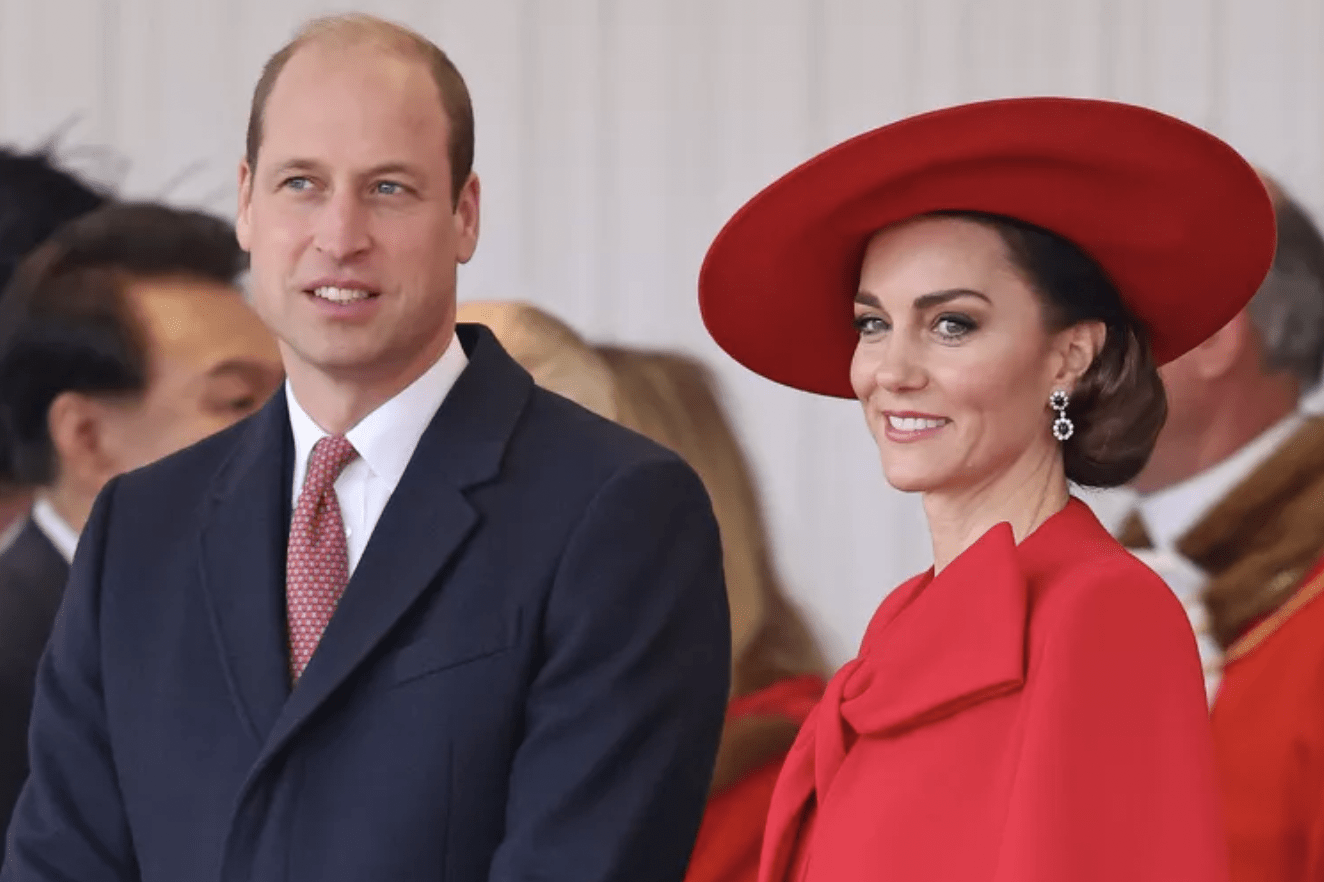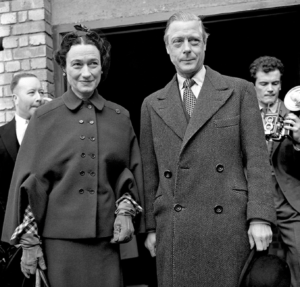The Royal Staff Shortage: History has Lessons
 Pool/PA
Pool/PA
Illness, exile and an aging bench have left the royal family with an understaffed team. The precedents are instructive.
By Patricia Treble
March 25, 2024
Since the late Queen Elizabeth II delivered her annus horribilis speech in 1992 — at the end of a year during which three of her children’s marriages unravelled and Windsor Castle went up in flames — that moniker has regularly popped up to signify a year filled with royal melodrama. Lately, virtually every year has been given that benchmark status. But this year, the annus horribilis label may finally be consigned to history based on under- rather than overstatement, given that it’s only March and two key members of “The Firm,” as it is known, are undergoing cancer treatment.
If the Queen is watching from some monarchical afterlife, she might be more inclined to use French rather than Latin at this point, with Après moi, le deluge being the timelier aphorism. After a relatively calm first year in the reign of Charles III, the House of Windsor is gripped by a plague of medical misfortune so ill-starred as to make the recent years of Sussex-related angst seem almost artless.
On the afternoon of Friday, March 22, the 42-year-old Princess of Wales, formerly known as Kate Middleton, ended weeks of speculation about her health with a 2:20 minute video statement delivered sitting on a bench, talking directly into the camera. The simple framing of the video, shot by a BBC team on Wednesday, only amplified the impact of her words, including:
“In January, I underwent major abdominal surgery in London and at the time, it was thought that my condition was non-cancerous. The surgery was successful. However, tests after the operation found cancer had been present. My medical team therefore advised that I should undergo a course of preventative chemotherapy and I am now in the early stages of that treatment.”
Kate had last been seen in public on Christmas Day, attending church with the rest of the royal family at Sandringham. Then, aside from the now-infamous family snap released on Mother’s Day in the U.K., which was “killed” by all major photo agencies after analysis revealed it had been edited by Kate, and a few other paparazzi images, she’s been dealing with her health crisis privately. At the same time, a whirlwind of increasingly fantastical conspiracy theories about why she’d “disappeared” crossed from the darkest corners of social media into the full glare of the mainstream media with an unprecedented alacrity and volume.
Having any high-profile member of the royal family out of the public eye for a quarter of a year would be a serious issue for a family that follows the late Queen’s maxim, “I must be seen to be believed.” But that problem is effectively doubled as the House of Windsor is dealing with two of its most senior royals going down eerily similar medical paths:
- Catherine, Princess of Wales: On January 17, Kensington Palace announced she had undergone abdominal surgery the previous day at the London Clinic. Initial tests found no cancer. Post-operative tests discover cancer and Kate began preventive chemotherapy in late February. She tells the public about the cancer diagnosis on March 22, though the type of cancer is not revealed.
- King Charles III: On January 17, Buckingham Palace announced he will undergo treatment for an enlarged prostate at the London Clinic. It occurs on January 26. Post-operative tests discover cancer. On February 5, the public is informed that he has “commenced a schedule of regular treatments” as of that day, though the type of cancer is not revealed beyond that it is not prostate cancer.
What, to the rest of the world, has been a tabloid drama fraught with speculation, leaks, elements of cancel culture, and genuine public concern is, for Prince William as heir to the throne, a crisis of more Shakespearean dimensions. His wife is ill, his father is ill, and he may have to becomeonarch at an age more than 30 years younger than his father was when he acceded to the throne in 2022 upon the death of his mother. While William lacks the decades of training that his father had while his grandmother lived out the longest British reign on record, he’s had more exposure to the job as heir than Elizabeth had when she became Queen in her mid-20s.
The impact of two popular royals sidelined for cancer treatment can be seen in the latest royal work data. Right now, there are 11 working royals, and their average age is 68.7 years.
The bench has thinned noticeably in recent years. In 2020, Prince Harry and his wife, Meghan, Duchess of Sussex, stepped back from their roles as working royals to create a new private life in California, financed through commercial deals with Netflix, Spotify, and other projects. While Prince Harry retains is place as fifth in line of succession, a return of the renegade couple to their former public roles as working royals isn’t an option after three years of slagging his family in interviews, shows, and even Harry’s memoir, Spare (though one never knows what the future may bring).
Prince Andrew has been permanently sidelined for his relationship with plutocrat sex trafficker Jeffrey Epstein. Then came the deaths of Prince Philip, then Queen Elizabeth, both of whom had packed calendars well into their 90s. Now, there are only four working royals aged 60 or younger: Kate, 42, her husband, Prince William, 41, and his aunt and uncle, Sophie, Duchess of Edinburgh, who is 59 and Prince Edward who just turned 60. The rest are in their 70s, except the Duke of Kent, who is 88, and his sister, Princess Alexandra, 87 (the latter two have dramatically reduced their workload recently).
What, to the rest of the world, has been a tabloid drama fraught with speculation, leaks, elements of cancel culture, and genuine public concern is, for Prince William as heir to the throne, a crisis of more Shakespearean dimensions.
Illness means that the King is undertaking a very light schedule of engagements in addition to his constitutional duties (it’s good that he actually enjoys paperwork). He compensates for foregoing public-facing events with a steady feed of videos and images from those engagements done behind palace walls. His widely-anticipated May visit to Canada with Queen Camilla has been indefinitely postponed. Meanwhile, Kate hasn’t done any official engagements in 2024, and joint visits being planned for Italy and Latvia with Prince William are on hold.
The ripple effect of Kate’s and the King’s medical issues extends to their spouses. Queen Camilla, 76, is representing her husband at more and more functions. The upheaval can be observed in her royal schedule — she’s undertaken 30 engagements to date this year, down significantly from the average of 50 she’s completed in the first quarters of the previous two years. Though she usually averages around 200 engagements a year, that number is less than half of what her husband or sister-in-law, Princess Anne, would usually do in a typical year.
Prince William’s situation is even more complicated — not only is his wife seriously ill but they are hands-on parents to three very young children. He drastically scaled back his schedule in the immediate aftermath of Kate’s surgery to focus on their family. Only recently has his official schedule gotten busier. Before the Easter school break, he did 13 engagements in March, up from six in February and one in January.
The time involved in any cancer treatment makes it all but certain that we’ll be seeing a lot less than usual of those four most-senior royals in the next few months. To help compensate for the absence of such important royals, the profiles of the “supporting cast” of working royals are being raised, and there has been speculation that younger members of the royal family — possibly Andrew’s daughters, Princess Beatrice and Princess Eugenie — could shift from their private sector positions into working royals.
Seventy-five years ago, the royal family experienced a similar, sudden dearth of senior working members. Indeed, the situation was remarkably like today’s talent pinch, attributable as it was to a combination of exile, illness, and lack of available incumbents to fill public roles.
In 1949, there were:
- An ailing king (George VI, recovering from surgery for arteriosclerosis)
- An heir busy with a young family (Princess Elizabeth)
- Few senior royals available to carry out official duties (Largely Queen Elizabeth, later the Queen Mother, as Princess Margaret was just 18)
- An exiled duke (the Duke of Windsor)
Back then, Princess Elizabeth had just given birth to her first child, Charles (and would “retire” from public life again while pregnant with Anne, born in 1950). As well, she was about to spend large parts of 1949-51 in Malta, where her husband was posted with the Royal Navy. (Their idyllic family life would abruptly end when her father died n 1952, at the age of 56.)

The Duke and Duchess of Windsor arrive in London in 1949/PA
At the time — speaking of Shakespearean — some believed that he succession was sufficiently vulnerable that there was a bizarre side-plot involving an exiled duke living outside of Britain with his controversial American wife in the personages of the Duke and Duchess of Windsor. As royal author Christopher Wilson recounted in the Daily Mail, the former King Edward VIII was envisioning an opportunity to reclaim the throne he’d abandoned a dozen years earlier via the crisis of his brother’s ill health. An advisor, Kenneth de Courcy, fuelled the intrigue, amplifying concerns that the young Elizabeth would fall under the sway of Prince Philip’s uncle, Louis Mountbatten, and adding to the atmosphere of crisis. “I must tell you confidentially that a Regency has been discussed,” de Courcy told the duke. Their plotting came to nothing, likely because such an act wouldn’t have been legal as the duke wasn’t eligible to be regent. In the end, Elizabeth became Queen, mastered the role, and muddled through until Anne and Charles became old enough to be full-time working royals. That’s roughly what will likely happen two decades from now with the Wales children (George, Charlotte, and Louis).
Right now, no one can know whether the current short-term issue will become a long-term crisis. A wait-and-see strategy seems the only option: Keep the current roster of working royals and instead rethink the royal calendar by focusing on what duties, patronages, and affiliations are truly necessary and can be handled by the number of available working royals. It worked in 1949. Have the monarchy and society changed so much in the past 75 years that the strategy can’t work now? Time will tell.
Patricia Treble has been writing about the royal family and the Crown for more than two decades, including her Write Royalty newsletter on Substack. She lives in Toronto.
